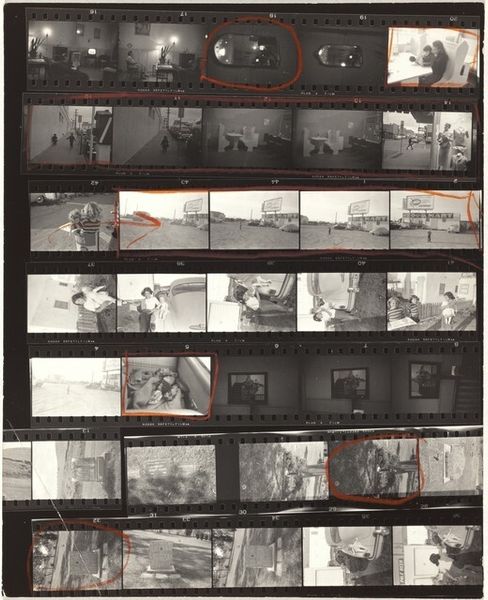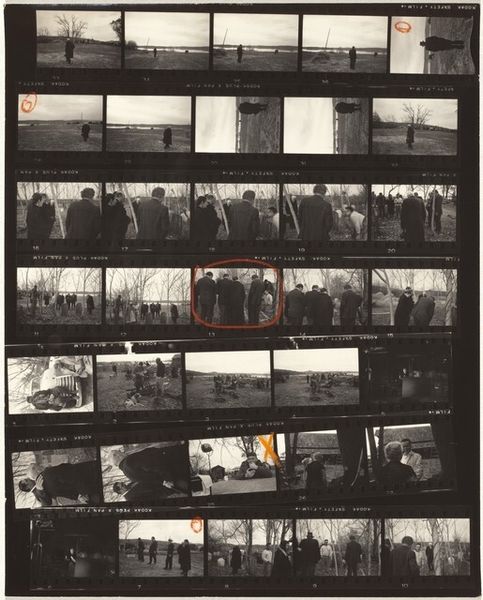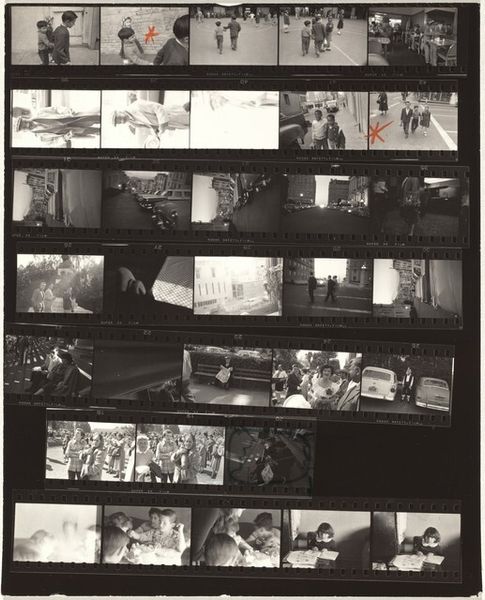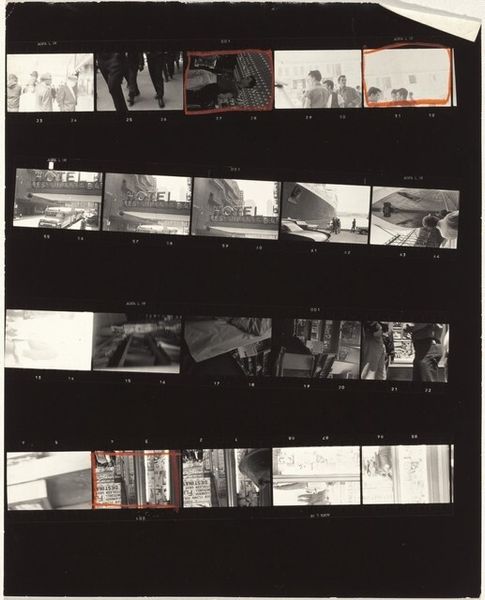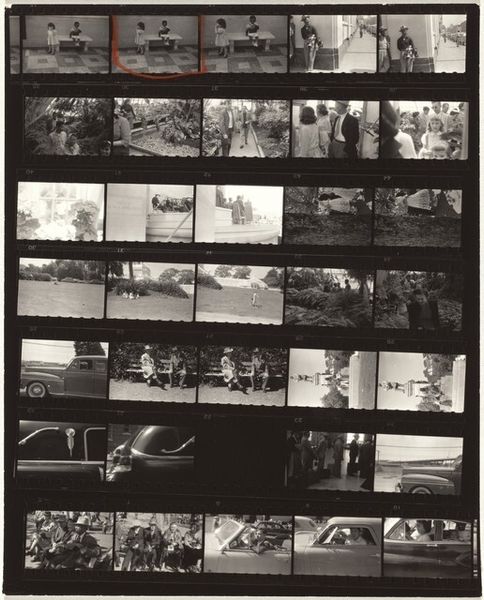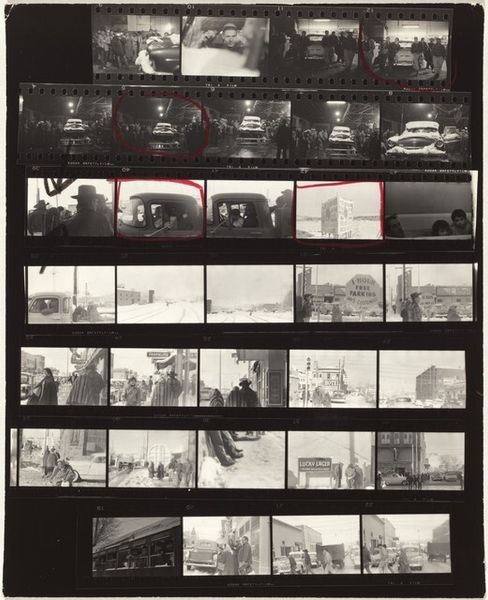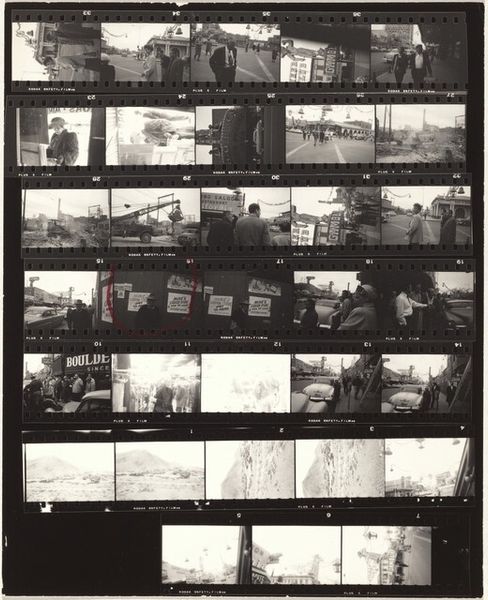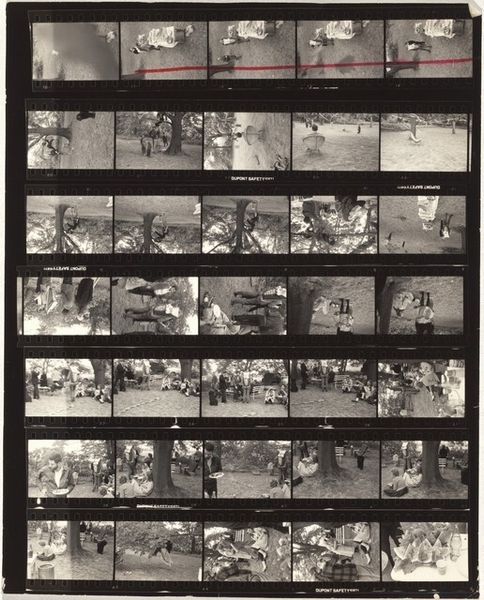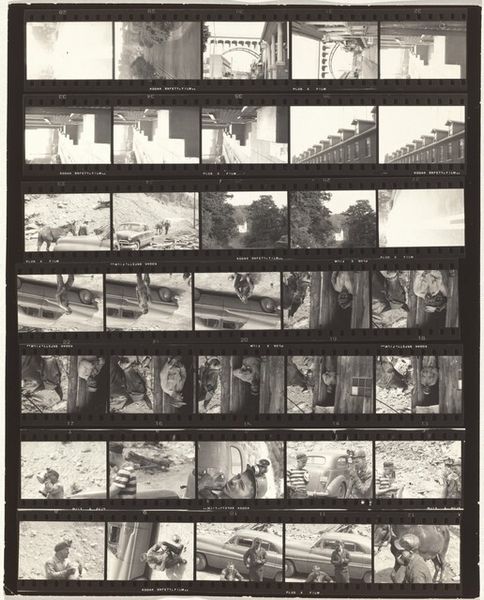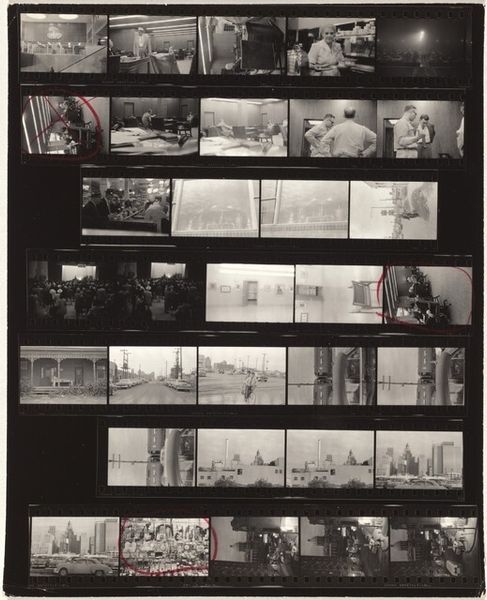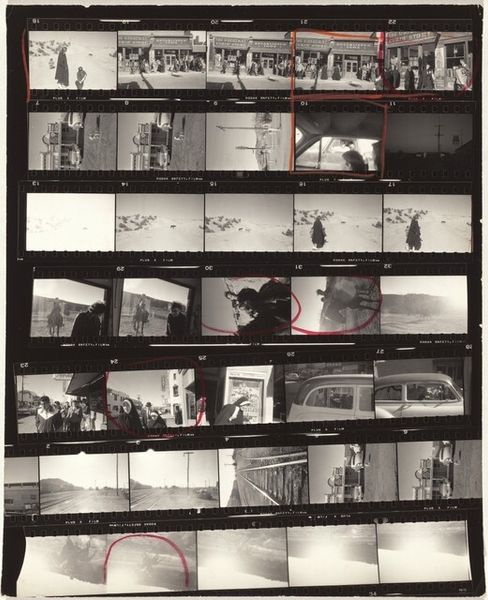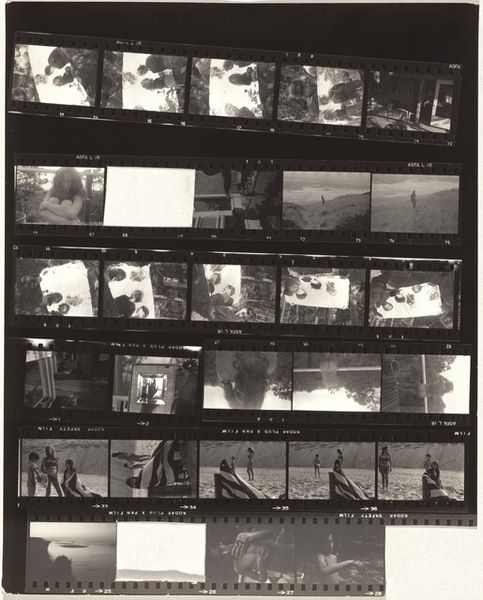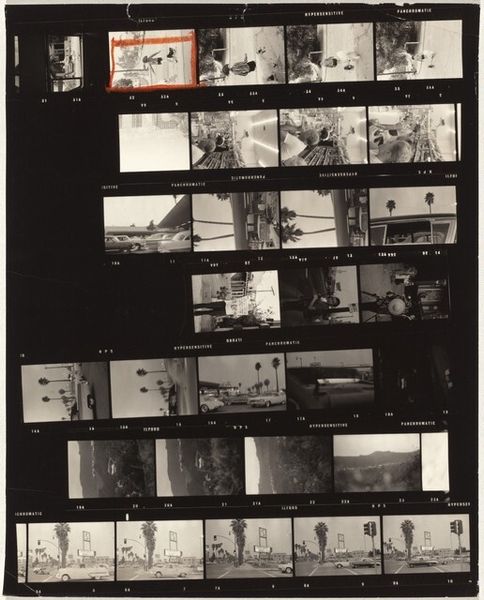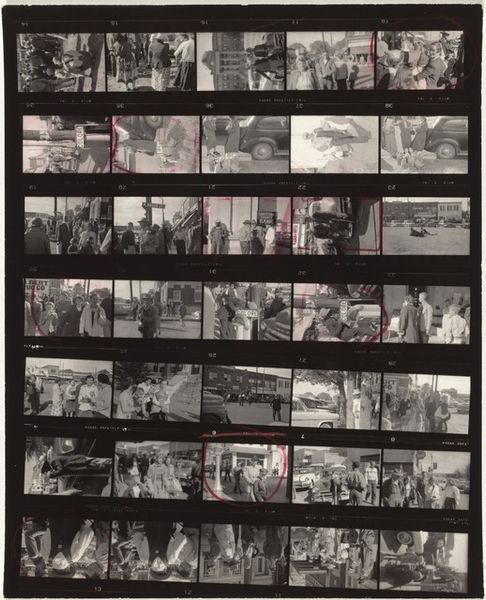
print, contact-print, photography
#
desaturated
# print
#
sculpture
#
landscape
#
dark hue
#
contact-print
#
photography
#
dark-toned
#
dark colour palette
#
realism
Dimensions: overall: 25.2 x 20.2 cm (9 15/16 x 7 15/16 in.)
Copyright: National Gallery of Art: CC0 1.0
Curator: Robert Frank's "Filming Elia Kazan's 'Wild River'--Tennessee 19," likely from 1959, is before us—a contact print documenting the behind-the-scenes of a film shoot. What is your initial reaction? Editor: A melancholy stillness pervades, despite the bustling implication of filmmaking. It feels… raw. You see the marks where some images were edited out with wax pencil and how he played with various shot depths and contrasts. It is clear that we can't forget this image is coming from film stock as well as film as concept. Curator: Precisely! The grid-like structure, a direct result of the contact sheet, imposes an interesting formal constraint. Each frame operates almost like a miniature composition. I am intrigued by the use of black and white. It lends the entire sheet a particular symbolic weight. Editor: Right, and in considering it, that desaturated choice speaks to the material realities. It allows the viewer to perceive this documentation directly; with these choices Frank is using visual conventions that point towards realist film stock, emphasizing the means by which these images come to be. This grounds the entire scene in a sort of accessible "truth," for the average viewer. Curator: Frank uses these constraints to communicate something more. Observe the visual rhymes present; figures in conversation, groupings of similar shapes or expressions. He isn't merely recording; he is curating moments within moments. Each panel serves almost like a character study within the larger mise-en-scène. The shadows have just as much, if not more, meaning than any other representational form in this arrangement. Editor: Thinking materially about what we are presented here also suggests broader questions of image economies. Frank shows labor and filmmaking not necessarily as a rarefied, abstract art process, but also something ordinary with cameras, mules, trucks, chairs and other everyday things around. I would suggest the material elements used here emphasize both Frank's hand as the maker of the image, as well as the images embedded documentation within it, creating levels of interpretation we should not dismiss! Curator: Absolutely. Ultimately, what strikes me most is how Frank transcends the documentary aspect, elevating it to a complex visual poem. Editor: I agree, and that's no small feat considering what he achieved with his use of both literal materials and the raw materials being displayed as documentation here! It allows us to examine not only art history but our place within those histories as observers of labor practices on a shoot that occurred nearly a hundred years before our present.
Comments
No comments
Be the first to comment and join the conversation on the ultimate creative platform.
